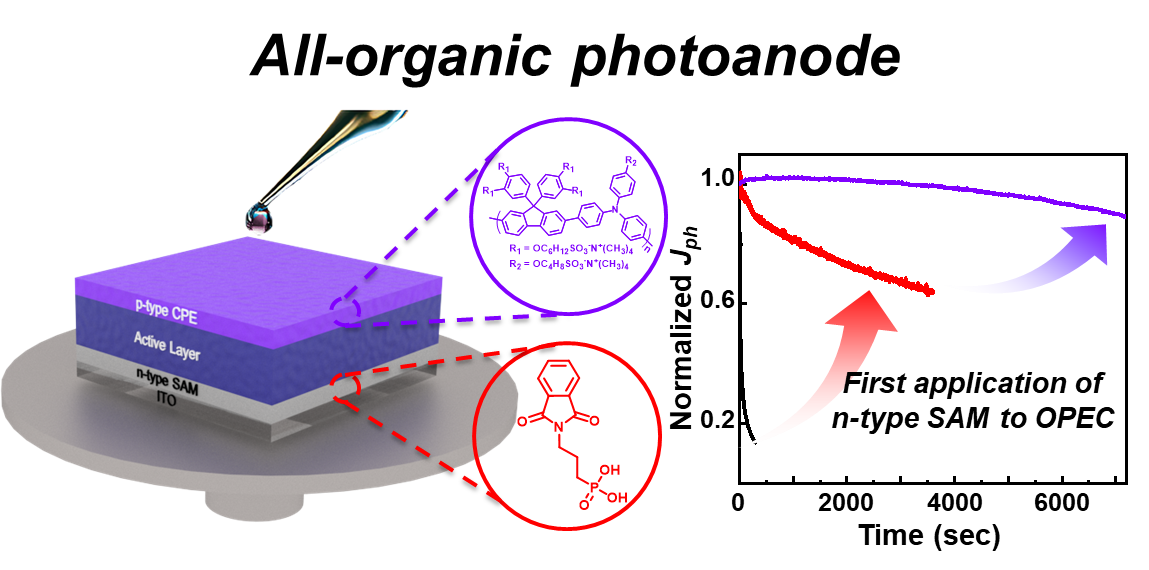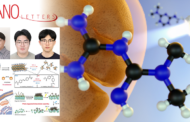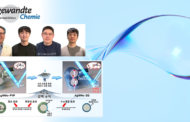A research team, affiliated with UNIST has unveiled a new technology, capable of making solar-powered hydrogen production more stable and cost-effective. This breakthrough involves constructing the entire photoelectrode, a key component in hydrogen generation, entirely from organic materials—overcoming longstanding issues of corrosion and delamination associated with conventional organic photoelectrodes.
Led Professor Jin Young Kim from the Graduate School of Carbon Neutrality at UNIST, in collaboration with Professor Jae Sung Lee from the School of Energy and Chemical Engineering, and Professor Han Young Woo from the Department of Chemistry at Korea University, the team announced that they have developed an all-organic photoanode that eliminates the need for metal oxides.
Solar hydrogen production operates on the principle that when sunlight irradiates a photoelectrode submerged in water, electrochemical reactions occur on its surface, splitting water molecules into hydrogen and oxygen. To maximize efficiency, these reactions typically occur in acidic or alkaline solutions. However, conventional organic photoelectrodes often rely on metal oxide charge transport layers, which are prone to corrosion or delamination in such environments, resulting in compromised stability.

Figure 1. Schematic image, illustrating the structure and performance of the highly stable all-in-one photoelectrode.
To address these challenges, the researchers developed a fully organic photoelectrode utilizing n-type self-assembled monolayers (SAMs) and p-type conjugated polymer electrolytes. The n-type SAM replaces metal oxides, enhancing adhesion between the substrate and the organic active layer while significantly improving electron transfer efficiency. The p-type polymer layer on the surface selectively transports holes and increases surface hydrophilicity, thereby improving contact with the aqueous solution.
The newly developed all-organic photoelectrode demonstrated a high photocurrent density of 7.92 mA/cm² in an acidic environment containing ascorbic acid. This performance metric directly correlates with hydrogen production rate. Remarkably, the device maintained over 90% of its initial performance after two hours of continuous illumination without the need for protective coatings or metal encapsulation, confirming its exceptional stability.
Professor Kim stated, “This research fundamentally resolves the pH sensitivity and delamination issues that have historically limited organic photoelectrodes,” adding, “Applying n-type self-assembled monolayers to the photoanode for the first time and constructing a fully organic photoelectrode demonstrates the practical viability of entirely organic systems.” He further noted, “This technology not only advances eco-friendly hydrogen production but also opens avenues for developing diverse organic-based photoelectrochemical devices.”
The study was conducted by Dr. Jiwoo Yeop and Dr. Jin Uk Lee from UNIST, along with Jae Hoon Son (Combined M.S. and Ph.D., Department of Chemistry) from Korea University, serving as the first authors. The research was published in the March 14 issue of ACS Energy Letters and was supported by the National Research Foundation of Korea (NRF) under the Ministry of Science and ICT.
Journal Reference
Jiwoo Yeop, Jae Hoon Son, Jin Uk Lee, et al., “Realization of All-Organic Photoanodes for Photoelectrochemical Cells,” ACS Energy Lett., (2025).













